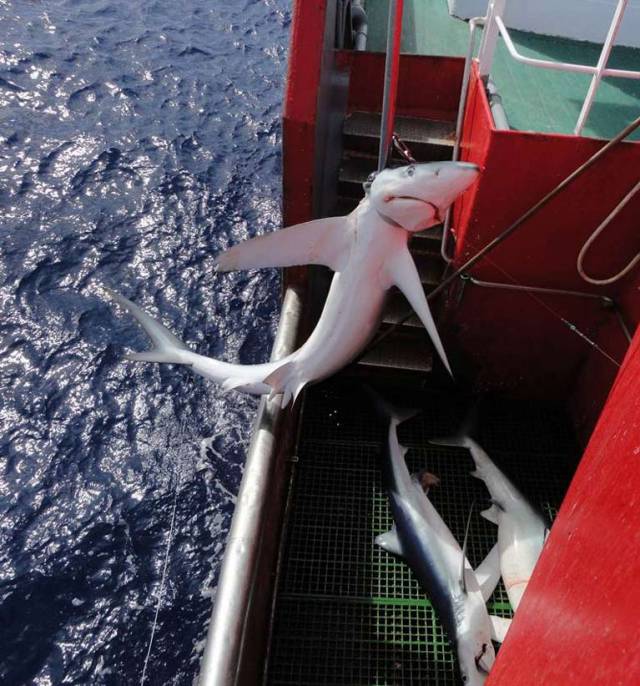The fastest sharks in the oceans find few refuges from longline fishing, according to an international study writes Lorna Siggins.
The study published in Nature yesterday bears out the concerns of Irish scientists who have called for greater protection of shark populations in these waters.
Three-quarters of the marine habitats of North Atlantic blue sharks may be overlapped by longline gear each month.
Up to 62 per cent of the territory of the fast swimming shortfin mako is also affected, the study has found.
Internationally protected species such as the great white and porbeagle sharks are also at risk.
Almost 2,000 sharks were tracked with satellite tags by an international team of over 150 scientists from 26 countries.
Prof Carlos Duarte, professor of marine science at King Abdullah University of Science and Technology in Saudi Arabia, says the data collated could provide a “blueprint” for locating marine protected areas on the high seas.
Large sharks on the high seas account for over half of all by-catch of this species in target fisheries, he says.
Longlining, where baited hooks are attached to extended lines, is a type of passive fishing which is low on fuel, but there have been concerns about the level of accidental capture or “by-catch” of sharks.
Prof Duarte explains that by overlaying global maps of shark abundance and movement on fishing vessel movement data, a global “hotspot” map was drawn.
The scientists tracked the satellite automatic identification system data on large fishing vessels, deploying longlines of up to 100 km in length.
Such shark hotspots were mostly located in frontal zones, boundaries in the sea between different water masses that are highly productive and food-rich, Prof Duarte explains.
The scientists found 24% of the mean monthly space used by sharks globally falls under the footprint of pelagic longline fisheries - rising to as high at 76 per cent for North Atlantic blue sharks.
“Our results show major high seas fishing activities are currently centred on ecologically important shark hotspots worldwide,” Prof David Sims, co-author of the study with Prof Duarte explains.
Prof Sims is involved in the Global Shark Movement Project, based at the Marine Biological Association Laboratory in Plymouth, Britain.
Several species of shark found in Irish and European waters are on the “red list” of endangered species issued by the International Union for Conservation of Nature (IUCN).
A group of Irish scientists have recently called on the Minister for Agriculture, Fisheries and Food Michael Creed to ensure there is no targeted fisheries of any elasmobranch species or sharks permitted in Irish waters, either by commercial vessels or by sea anglers.
Last year, a Spanish fishing vessel, Virxen da Blanca was detained in Irish waters with over 168,000 kilos of “bycatch” shark on board while “ fishing for tuna”.
A special sitting of Clonakilty District Court last September heard the vessel had 164,250kg of blue shark, 98kg of mako shark and 1,250kg of shark fins on board.
Shark fins can fetch a high price in Asia, where they are used in shark fin soup. The fins are often removed while the shark is still alive and it can then no longer swim effectively and either suffocates or is eaten by other predators.
The scientists say that the maximum permitted “bycatch” of elasmobranch species should be set at 30% of catch onboard, for all EU vessels fishing in Irish waters.


























































